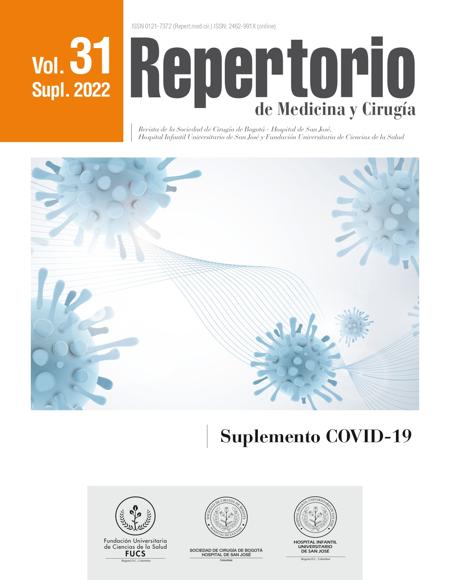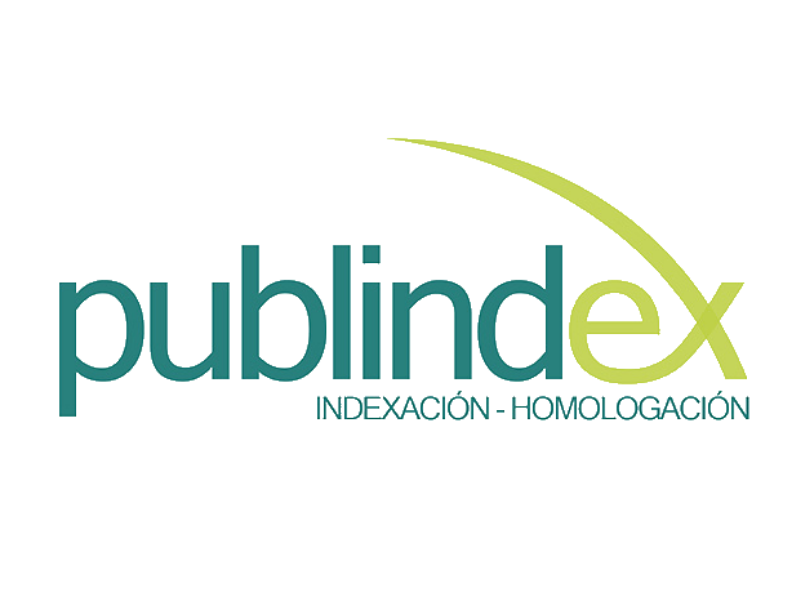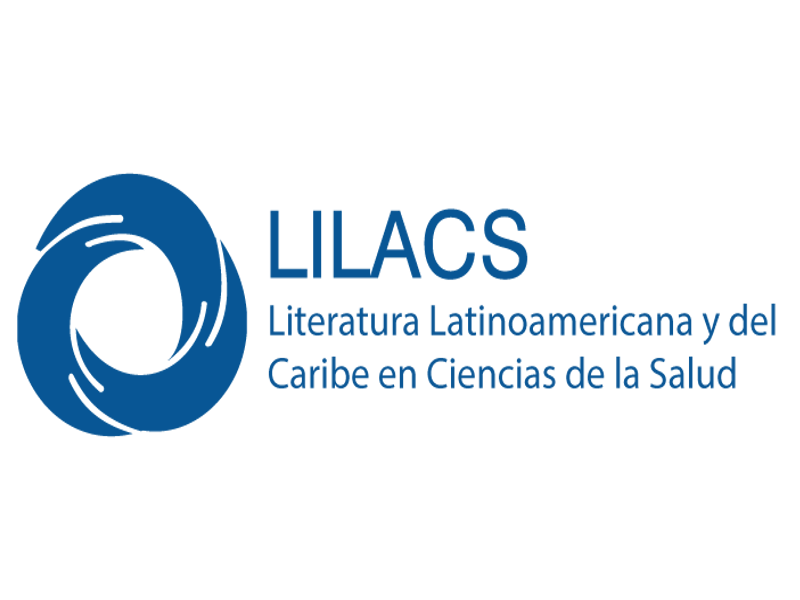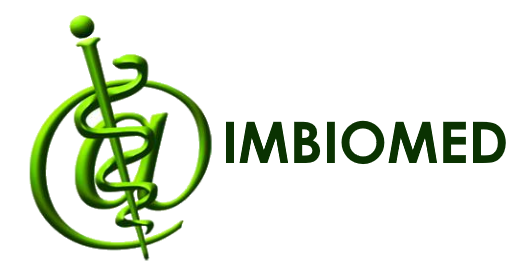Spontaneous bilateral lower limb arterial ischemia due to mild COVID-19
Isquemia arterial bilateral espontánea de extremidades inferiores por COVID-19 leve
![]()
![]()
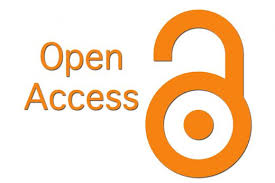
Show authors biography
Introduction: COVID-19 infection causes pneumonia as part of severe acute respiratory syndrome Coronavirus 2 (SARS-CoV-2), ranging from asymptomatic and mild disease to a critical and severe condition mediated by a dysregulated immune response. Case presentation: 47-year-old male patient, from an urban area, with no significant medical history. He attended a hospital´s emergency room with lower limb pain since three days prior to consultation. Likewise, he reported previous mild respiratory symptoms. The SARS-CoV-2 test result was positive. Lower-extremity arterial duplex ultrasound showed adequate blood flow with complete distal artery obstruction. Discussion and conclusions: a case is reported on a patient with mild COVID-19 who developed spontaneous lower extremity arterial ischemia requiring amputation. Emphasis is placed on some theories that suggest immune thrombosis and endothelial dysfunction as the causative mechanisms of this complication.
Article visits 565 | PDF visits 285
Downloads
- Chen, T., Wu, D., Chen, H., Yan, W., Yang, D., Chen, G., et al. Clinical characteristics of 113 deceased patients with coronavirus disease 2019: retrospective study. BMJ [Internet]. 2020;368, m1091. Disponible en: 10.1136/bmj.m1091 DOI: https://doi.org/10.1136/bmj.m1091
- Wang D, Hu B, Hu C, Zhu F, Liu X, Zhang J, Wang B, Xiang H, Cheng Z, Xiong Y, Zhao Y, Li Y, Wang X, Peng Z. Clinical characteristics of 138 hospitalized patients with 2019 novel coronavirus-infected pneumonia in Wuhan, China. JAMA [Internet]. 2020; Disponible en: 10.1001/jama.2020.1585 DOI: https://doi.org/10.1001/jama.2020.1585
- Y. Rodríguez, et al. Autoinflammatory and autoimmune conditions at the crossroad of COVID- 19. J Autoimmun [Internet]. 114 (2020) 102506. Disponible en: https://doi.org/10.1016/j.jaut.2020.102506 DOI: https://doi.org/10.1016/j.jaut.2020.102506
- Wu Z, Mcgoogan JM. Characteristics of and important lessons from the coronavirus disease 2019 (COVID-19) outbreak in China. JAMA. 2020;323:1239. DOI: https://doi.org/10.1001/jama.2020.2648
- Y. Zuo, S. Yalavarthi, H. Shi, K. Gockman, M. Zuo, J.A. Madison, C. Blair,, A. Weber, B.J. Barnes, M. Egeblad, R.J. Woods, Y. Kanthi, J.S. Knight. Neutrophil extracellular traps (NETs) as markers of disease severity in COVID-19. MedRxiv [Internet]. 2020; Disponible en: https://doi.org/10.1101/2020.04.09.20059626 In press DOI: https://doi.org/10.1101/2020.04.09.20059626
- N. Sethuraman, S.S. Jeremiah, A. Ryo. Interpreting diagnostic tests for SARS-CoV- 2. J Am Med Assoc [Internet]. 323 (22) (2020) 2249-2251. Disponible en: https://doi.org/10.1001/jama. 2020.8259 In press DOI: https://doi.org/10.1001/jama.2020.8259
- M.Z. Tay, C.M. Poh, L. Rénia, P.A. MacAry, L.F.P. Ng. The trinity of COVID-19: immunity, inflammation and intervention. Nat Rev Immunol [Internet]. 20 (2020) 363-374. Disponible en: https://doi.org/10.1038/s41577-020-0311-8 In press. DOI: https://doi.org/10.1038/s41577-020-0311-8
- Q.-X. Long, B.-Z. Liu, H.-J. Deng, G.-C. Wu, K. Deng, Y.-K. Chen, P. Liao, J.-F. Qiu, Y. Lin, X.-F. Cai, D.-Q. Wang, Y. Hu, J.-H. Ren, N. Tang, Y.-Y. Xu, L.-H. Yu, Z. Mo, F. Gong, X.-L. Zhang, W.-G. Tian, L. Hu, X.-X. Zhang, J.-L. Xiang, H.-X. Du, H.-, W. Liu, C.-H. Lang, X.-H. Luo, S.-B. Wu, X.-P. Cui, Z. Zhou, M.-M. Zhu, J. Wang, C.-, J. Xue, X.-F. Li, L. Wang, Z.-J. Li, K. Wang, C.-C. Niu, Q.-J. Yang, X.-J. Tang, Y. Zhang, X.-M. Liu, J.-J. Li, D.-C. Zhang, F. Zhang, P. Liu, J. Yuan, Q. Li, J.-L. Hu, et al. Antibody responses to SARS-CoV-2 in patients with COVID- 19. Nat Med [Internet]. 2020; Disponible en: https://doi.org/10.1038/s41591-020-0897-1 In press. DOI: https://doi.org/10.1038/s41591-020-0897-1
- S.Q. Du, W. Yuan. Mathematical modeling of interaction between innate and adaptive immune responses in COVID‐19 and implications for viral pathogenesis. J Med Virol [Internet]. 2020; Disponible en: https://doi.org/10.1002/jmv.25866 In press jmv.25866 DOI: https://doi.org/10.1002/jmv.25866
- Bonaventura, A., Vecchié, A., Dagna, L., Martinod, K., Dixon, D. L., Van Tassell, B. W., Dentali, F., Montecucco, F., Massberg, S., Levi, M., & Abbate, A. Endothelial dysfunction and immunothrombosis as key pathogenic mechanisms in COVID-19. Nat Rev Immunol. 2021;21(5), 319-329. DOI: https://doi.org/10.1038/s41577-021-00536-9
- Jin Y, Ji W, Yang H, Chen S, Zhang W, Duan G. Endothelial activation and dysfunction in COVID-19: from basic mechanisms to potential therapeutic approaches. Signal Transduct Target Ther. 2020;24;5(1):293. DOI: https://doi.org/10.1038/s41392-020-00454-7
- Iba, T., Levy, J. H., Levi, M., Connors, J. M. & Thachil, J. Coagulopathy of coronavirus disease 2019. Crit Care Med. 2020;48, 1358-1364. DOI: https://doi.org/10.1097/CCM.0000000000004458
- Kaur P, Qaqa F, Ramahi A, Shamoon Y, Singhal M, Shamoon F, Maroules M, Singh B. Acute upper limb ischemia in a patient with COVID-19. Hematol Oncol Stem Cell Ther. 2020;13:S1658-3876(20)30096-0.
- Xiong M, Liang X, Wei YD. Changes in blood coagulation in patients with severe coronavirus disease 2019 (COVID‐19): a meta‐analysis. Br J Haematol. 2020;189: 1050-1052. DOI: https://doi.org/10.1111/bjh.16725
- Cui S, Chen S, Li X, Liu S, Wang F. Prevalence of venous thromboembolism in patients with severe novel coronavirus pneumonia. J Thromb Haemost [Internet]. 2020;18: 1421-1424. Disponible en: https://doi.org/10.1111/jth.14830 DOI: https://doi.org/10.1111/jth.14830
- Klok FA, Kruip MJHA, van der Meer NJM, Arbous MS, Gommers, DAMPJ, Kant KM, et al. Confirmation of the high cumulative incidence of thrombotic complications in critically ill ICU patients with COVID-19. Thromb Res. 2020;191:148-150. DOI: https://doi.org/10.1016/j.thromres.2020.04.041
- Liwinski, T., Zheng, D. & Elinav, E. The microbiome and cytosolic innate immune receptors. Immunol Rev [Internet]. 2020; Disponible en: https://doi.org/10.1111/imr.12901 DOI: https://doi.org/10.1111/imr.12901
- Toldo, S., Bussani, R., Nuzzi, V., Bonaventura, A., Mauro, A. G., Cannatà, A., Pillappa, R., Sinagra, G., Nana-Sinkam, P., Sime, P., & Abbate, A. Inflammasome formation in the lungs of patients with fatal COVID-19. Inflamm Res Off J Eur Histamine Res Soc. 2021;70(1), 7-10. DOI: https://doi.org/10.1007/s00011-020-01413-2
- Rodrigues, T. S., de Sá, K., Ishimoto, A. Y., Becerra, A., Oliveira, S., Almeida, L., Gonçalves, A. V., Perucello, D. B., Andrade, W. A., Castro, R., Veras, F. P., Toller-Kawahisa, J. E., Nascimento, D. C., de Lima, M., Silva, C., Caetite, D. B., Martins, R. B., Castro, I. A., Pontelli, M. C., de Barros, F. C., Zamboni, D. S. Inflammasomes are activated in response to SARS-CoV-2 infection and are associated with COVID-19 severity in patients. J Exp Med. 2021;218(3), e20201707. DOI: https://doi.org/10.1084/jem.20201707
- Goeijenbier, M., van Wissen, M., van de Weg, C., Jong, E., Gerdes, V. E., Meijers, J. C., Brandjes, D. P., & van Gorp, E. Review: Viral infections and mechanisms of thrombosis and bleeding. J Med Virol [Internet]. 2012;84(10), 1680-1696. Disponible en: https://doi.org/10.1002/jmv.23354 DOI: https://doi.org/10.1002/jmv.23354
- Godo, S. & Shimokawa, H. Endothelial functions. Arter Thromb Vasc Biol. 2017;37, 108-114. DOI: https://doi.org/10.1161/ATVBAHA.117.309813
- Sturtzel, C. Endothelial cells. Adv Exp Med Biol. 2017;1003, 71-91. DOI: https://doi.org/10.1007/978-3-319-57613-8_4
- Kruger-Genge, A., Blocki, A., Franke, R. P. & Jung, F. Vascular endothelial cell biology: an update. Int J Mol Sci. 2019;20, 4411. DOI: https://doi.org/10.3390/ijms20184411
- Escher, R., Breakey, N. & Lammle, B. Severe COVID-19 infection associated with endothelial activation. Thromb Res. 2020;190, 62. DOI: https://doi.org/10.1016/j.thromres.2020.04.014
- Green, S. J. Covid-19 accelerates endothelial dysfunction and nitric oxide deficiency. Microbes Infect. 2020;22, 149-150. DOI: https://doi.org/10.1016/j.micinf.2020.05.006
- Pober, J. S. & Sessa, W. C. Evolving functions of endothelial cells in inflammation. Nat Rev Immunol. 2007;7, 803-815. DOI: https://doi.org/10.1038/nri2171
- Akerstrom, S. et al. Nitric oxide inhibits the replication cycle of severe acute respiratory syndrome coronavirus. J Virol. 2005;79, 1966-1969. DOI: https://doi.org/10.1128/JVI.79.3.1966-1969.2005
- Akerstrom, S., Gunalan, V., Keng, C. T., Tan, Y. J. & Mirazimi, A. Dual effect of nitric oxide on SARS-CoV replication: viral RNA production and palmitoylation of the S protein are affected. Virology. 2009;395, 1-9. DOI: https://doi.org/10.1016/j.virol.2009.09.007
- Panigada, M. et al. Hypercoagulability of COVID-19 patients in intensive care unit: a report of thromboelastography findings and other parameters of hemostasis. J Thromb Haemost. 2020;18, 1738-1742. DOI: https://doi.org/10.1111/jth.14850
- Ranucci, M. et al. The procoagulant pattern of patients with COVID-19 acute respiratory distress syndrome. J Thromb Haemost. 2020;18, 1747-1751. DOI: https://doi.org/10.1111/jth.14854
- Ciceri, F. et al. Microvascular COVID-19 lung vessels obstructive thromboinflammatory syndrome (MicroCLOTS): an atypical acute respiratory distress syndrome working hypothesis. Crit Care Resusc. 2020;22, 95-97. DOI: https://doi.org/10.51893/2020.2.pov2
- Gattinoni, L., Chiumello, D., Caironi, P., Busana, M., Romitti, F., Brazzi, L., & Camporota, L. COVID-19 pneumonia: different respiratory treatments for different phenotypes? Intensive Care Med. 2020;46(6);1099-1102. DOI: https://doi.org/10.1007/s00134-020-06033-2
- Zuo, Y., Estes, S. K., Ali, R. A., Gandhi, A. A., Yalavarthi, S., Shi, H., Sule, G., Gockman, K., Madison, J. A., Zuo, M., Yadav, V., Wang, J., Woodard, W., Lezak, S. P., Lugogo, N. L., Smith, S. A., Morrissey, J. H., Kanthi, Y., & Knight, J. S. Prothrombotic autoantibodies in serum from patients hospitalized with COVID-19. Sci Transl Med [Internet]. 2020;12(570), eabd3876. Disponible en: https://doi.org/10.1126/scitranslmed.abd3876 DOI: https://doi.org/10.1126/scitranslmed.abd3876
